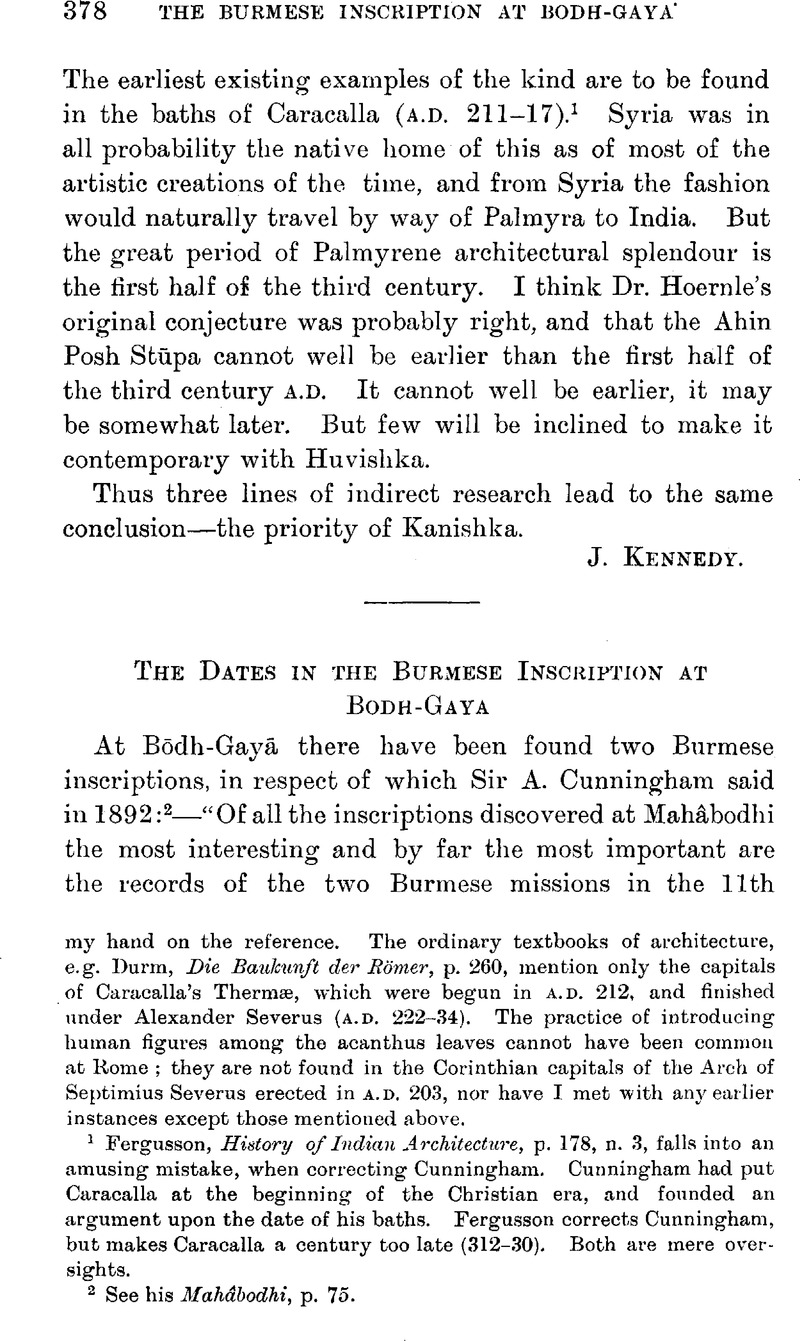No CrossRef data available.
Article contents
The Dates in the Burmese Inscription at Bōdh-Gayā
Published online by Cambridge University Press: 15 March 2011
Abstract

- Type
- Miscellaneous Communications
- Information
- Copyright
- Copyright © The Royal Asiatic Society 1913
References
page 378 note 1 Fergusson, , History of Indian Architecture, p. 178Google Scholar, n. 3, falls into an amusing mistake, when correcting Cunningham. Cunningham had put Caracalla at the beginning of the Christian era, and founded an argument upon the date of his baths. Fergusson corrects Cunningham, but makes Caracalla a century too late (312–30). Both are mere over-sights.
page 378 note 2 See his Mahâbodhi, p. 75.Google Scholar
page 379 note 1 See Mahâbodhi, pp. 27 f., 75Google Scholar ff., and the references given there.
page 380 note 1 The form in which this name is actually presented in our inscription is ‘Sakarac’, twice. In the Po-u-daung inscription ot A. D. 1774 and the Kalyānī inscription of a.d. 1476 (Ind. Ant., vol. 22, pp. 2 ff., 151 ff.Google Scholar) it is given as ‘Sakkarāj’. This seems to be the form which is habitually used now. And Mr. Taw Sein Ko has told us (Ind. Ant, vol. 23, p. 256Google Scholar) that the first component of the name is popularly supposed to be Sakka, = Śakra (Indra). But he added:—“In ancient books and inscriptions, however, the word is found written Sakarāj, which is more consonant with its true etymology from Śakarājā” (the Śaka king). The reckoning was started by cutting off 560 years of the Indian Śaka era of a.d. 78: and for this reason it is also known as the Khachha-pañcha or 0–6–5, i.e. the 560 reckoning.
page 380 note 2 This table was given to supplement his book, mentioned farther on, which does not go back before a.d. 1739.
page 380 note 3 It is always to be borne in mind (1) that the years of the Burmese Era change their number at the Thingyan Tet, which is the mean Mēsha-saṁkrānti, the entrance of the mean sun into Mēsha (Aries), of the Hindūs; and so the reckoning goes by solar years, and some days of Tagu, or even the whole of that month and some days of Kason, may belong to the end of a given year, instead of its beginning: and (2) that the expired year is habitually cited, though it is not described as such. In accordance with (2), we always make our first calculation for the expired year, and turn to the current year only if we cannot get a correct result with the expired year. Sir A. Irwin's tables are framed for the expired years.




